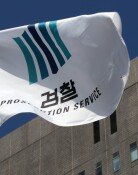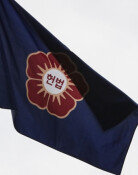Revived Chip Maker Hynix Aiming for World No. 1
Revived Chip Maker Hynix Aiming for World No. 1
Posted August. 27, 2009 08:30,
We have to recover our territory.
Hynix Semiconductor employees yesterday confirmed their determination at their factory in Icheon, Gyeonggi Province.
Since the company saw a better-than-expected performance last month, workers at the M10 DRAM plant were in a festive mood while handing out rice cakes.
Workers at the factory are called warriors of Damul Force. Damul is a Korean word reflecting the will of the ancient Goguryeo Dynasty, which struggled to recover the territory of Gojoseon, another ancient Korean kingdom.
Park Jae-su is in charge of manufacturing technologies at the factory. Known as the general of the Damul Force, he said, Certain DRAM products have been in short supply. The factory has operated at full capacity. A gleam of Hynixs restoration has emerged since Damul warriors have worked hard.
After recording a deficit for seven consecutive quarters since the fourth quarter of 2007, Hynix is highly likely to record a surplus in the third quarter this year.
The company was created 10 years ago through a big deal between Hyundai Electronics and LG Semiconductor. The company had a staggering debt of 15 trillion won (12 billion U.S. dollars) or more at the time, but has grown into the worlds second-largest DRAM manufacturer.
○ Collapse for Koreas own good?
Hyundai Electronics and LG Semiconductor joined forces to form Hynix, which immediately became the worlds largest DRAM manufacturer after the merger. Before the consolidation, Hyundai Electronics was the worlds third-largest chipmaker with 11.4 percent of the market and LG Semiconductor was No. 5 with 7.9 percent. Their union resulted in a combined share of 19.3 percent, slightly exceeding that of Samsung Electronics (18.5 percent).
Though Hynix had a large market share, its substance was far weaker than its appearance. At the time, its debts amounted to 15.8 trillion won (12.7 billion dollars). Making matters worse, a sharp fall in DRAM prices worsened the world chip market and created a liquidity problem for Hynix. Voices grew that Koreas economy would survive only if Hynix collapsed.
The companys chief technology officer Choi Jin-seok, who used to work for Samsung Electronics before moving to Hynix, played a pivotal role in driving Hynixs recovery. I found lots of excellent engineers at the Icheon factory. I believed that strong determination, enthusiasm and pride would help us to bring Hynix back to life.
In late 2001, creditors attempted to sell Hynix to Micron of the United States. Choi persuaded Korea Exchange Bank, the major creditor of Hynix, not to, saying, Hynix does not need much investment since it has drawn much investment already. We can improve manufacturing efficiency while minimizing investment.
Chois efforts encouraged Hynixs board of directors to reject the investment proposal and Micron announced that it would give up its acquisition bid.
○ Working overnight
Hynix overcame a threat but knew innovation was the only way to save itself. Choi even brought a sleeping bag to his office to work overnight.
He sought to raise the yield, or the ratio of finished products among manufactured products, by developing technologies and improving productivity. Since semiconductors are a process industry, profit sharply falls if yield aggravates or production volume decreases.
A drop of 30 percent in cost is no different from earning 30 percent more in operating profit. Chip makers should improve productivity to make money for investment into next-generation technologies, he said.
The unyielding efforts of its workers enabled Hynix to surpass the yield of Samsung in several semiconductor products. Former Samsung Group Chairman Lee Kun-hee mentioned Choi in 2007 when he reprimanded Samsung Electronics managers in charge of semiconductor products.
Choi even dispelled the common notion saying profits are proportional to investment in the chip industry. He reduced the amount of investment by changing processing machines with low yields instead of overhauling entire manufacturing lines.
○ 44-nano DRAMs next month?
Hynix has prepared its second takeoff. According to market researcher iSuppli, Hynix was the worlds second-largest DRAM producer with a market share of 21.7 percent in the second quarter this year, following leader Samsung Electronics with 34.1 percent. Hynix plans to apply 44nm procedures to manufacture DDR3 DRAMs, whose productivity has improved 50 percent.
The 44nm procedure is a state-of-the-art procedure to reduce circuit width on a silicon wafer to 44nm. Hynix has been developing the technology since 2007.
Kim Dae-yeong, senior researcher at Hynix Research Center, said, We struggled to develop the procedure since we thought we cannot become the worlds largest chipmaker without 44nm technologies.
In speed of data transmission, DDR3 is two times faster than DDR2 and 30 percent more efficient in power consumption. The sole obstacle to commercializing DDR3 is the high price tag, but more DRAM products can be produced on a wafer if the circuit width is reduced to 44nm.
abc@donga.com
Headline News
- Med professors announce intention to leave hospitals starting Thursday
- Bridge honoring Sgt. Moon Jae-sik unveiled in Pennsylvania
- Chief of Staff Chung tells presidential secretaries to stay away from politics
- US FTC bans noncompete agreements
- N. Korea launches cyberattacks on S. Korea's defense companies







